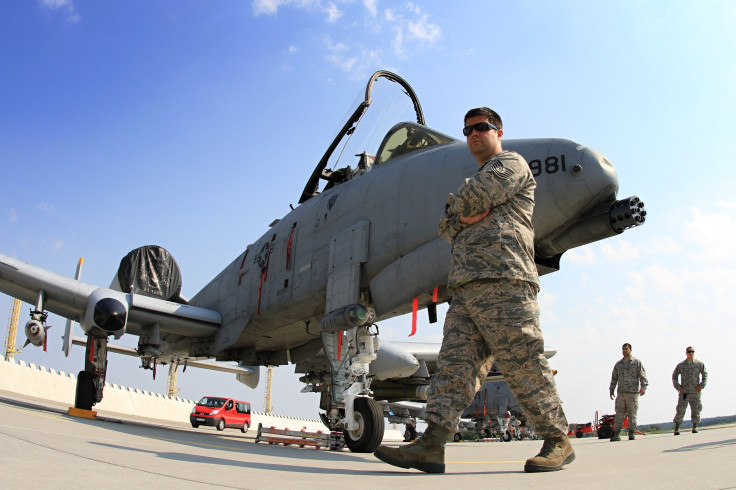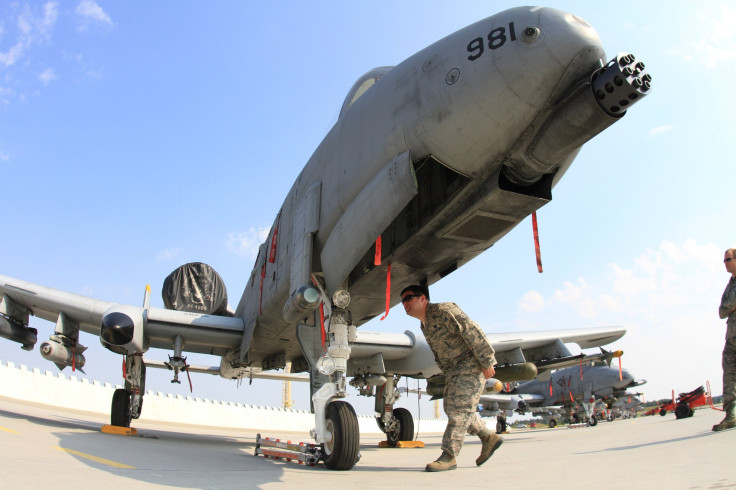What Is Hypoxia? Air Force Appoints General To Investigate Mid-Flight Incidents

Brig. Gen. Bobbi Jo Doorenbos presently assistant to the director of the Air National Guard will head a new team to investigate a growing number of hypoxia episodes in aircraft to mitigate its occurrence in the future. The team "will integrate and coordinate efforts to address aircrew Unexplained Physiologic Events (UPE’s)," the Air Force announced in a press release on Jan. 22.
The press release states the purpose of formulating the team is to "identify solutions to optimize human performance in tactical aviation and eliminate or minimize the impact of UPE’s."
Hypoxia is described as an incident of oxygen deprivation to the brain. Low oxygen supply in your blood can result in hypoxia. The brain needs blood and oxygen to function, and any disruption that will impede unobstructed flow of oxygen and blood to the brain will result in hypoxia. In the absence of oxygen brain function will cease, causing severe brain damage.
There are numerous causes of hypoxia and among them are flying in high altitudes, carbon monoxide poisoning, smoke inhalation, choking and low blood pressure caused due to hemorrhage, which can cause significant damage to the brain. The most common symptoms of hypoxia are confusion, shortness of breath, rapid breathing, accelerated heart rate, sweating and wheezing. If the symptoms are left untreated they can prove quite deadly.
Since symptoms of hypoxia can be detrimental to proper brain function it is proven to incapacitate one’s ability to work in hypoxic conditions.
As hypoxia is known to occur due to a shortage of oxygen in the air breathed, it is frequently experienced by people in high altitudes and in marine environments where the oxygen gets gradually thinner.
Hypoxia is suffered in aircraft due to cabin temperature, altitude, rate of ascent and duration at altitude. Since the effects of hypoxia include confusion, euphoria, inability to concentrate, impaired decision-making, impaired psychomotor performance and loss of consciousness it can be very unsafe to fly.
"As part of the integrated effort to address physiological events, the Air Force is providing more resources to understand UPEs, standardize response actions to such events and assess options for more robust aircrew training to recognize and respond to these events," Doorenbos said. "Our ultimate goal is to prevent UPEs."
Lt. Gen. Chris Nowland, Air Force deputy chief of staff for operations, established the team to reduce the risk, and to address the physiological events, and recommend appropriate measures to tackle the issue experienced by pilots that is proven to hinder their ability to fly safely. The increase in the number of grounded flights due to UPE's has become an object of growing concern in the Air Force.
"Maximizing the performance of combat aircraft carries inherent risk, but it is our solemn duty as a service to provide the best equipment and training for our Airmen to ensure their safety is never compromised," Nowland said. "The Air Force takes UPEs very seriously. Results from investigations into these events are shared between Air Force organizations, other military services and industry partners."

The move comes after an air force base in Arizona had to ground their flights when pilots experienced oxygen deprivation symptoms. In June 2017 the force grounded all 55 F-35A Lightning IIs in Luke Air force base, Arizona, after the pilots complained of hypoxia related issues, Military.com reported.
Airport officials said since 2011, there had been reports of at least 15 F-35A in-flight and ground physiological events.
More recently in Arizona two dozen A-10 Thunderbolts were grounded after the pilots came down with Hypoxia symptoms. The incident occurred at the Davis-Monathan Air force base in November 2017, where two pilots suffered hypoxia mid-air and one on the ground. The cause of the symptoms couldn’t be determined by Air force officials.
© Copyright IBTimes 2025. All rights reserved.





















